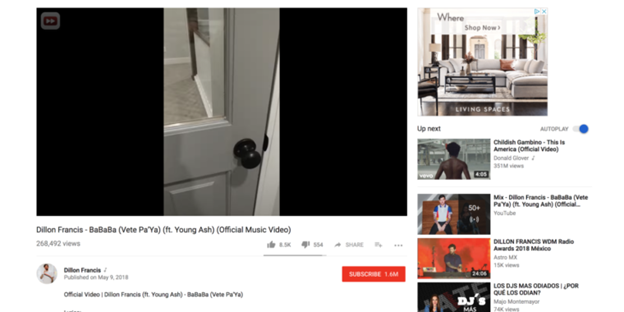
Vertical Video
As you’ve probably already noticed, vertical video is the latest trend on the rise. Why vertical video you may be asking? Well simply put it’s convenient. TikTok, Instagram, YouTube, Snapchat, and even DoorDash all have one thing in common, and that’s quick and easy access.
Quick and easy access
I have a phone, you have a phone, shoot even my dog has a phone. It’s just a sign of the times, so ask yourself “how am I holding my phone?” Well unless I missed the memo, phones are typically held vertically, so naturally forums of media that utilize vertical video would be prone to be more successful. I mean think about it, The mass majority of this generation spends over a third of their time on mobile devices right? So with that knowledge in mind, why produce something that’d go against that flow?
TikTok is a prime example of a company that has mastered the formula of vertical video. You don’t have to compromise your comfort for entertainment. TikTok among other apps promotes 15-30 second vertical videos that don’t require you to adjust your mobile device to watch. Not only is vertical video convenient, but it’s more likely to keep your audience engaged.
People Finish Vertical Videos
Numbers don’t lie, and research has proven that Vertical videos have a larger completion percentage than that of horizontal videos. Why is that you may ask? Well for starters there is no additional input required for vertical video. For instance, say you are on your phone when you stumble upon two videos. One requires you to turn your phone and maximize your screen in order to know what’s going on, and the other just plays from the palm of your hand. No additional work required. Most people would pick the option with less steps, from there it’s a question of whether the video keeps their engagement or not.
Target Audience
It’s Important to know who you are making videos for, and where said video is going. It’s not suggested to make vertical videos simply for the sake of making vertical videos. For a long period of time there was a stigma surrounding the art of vertical videos, as the aspect ratio wasn’t designed for larger devices like a tv or movie screens.
Case in Point:

The vertical video side bars proved to provide a very jarring viewing experience and didn’t conform well to larger screens. However vertical video aspect ratios are typically suited to fill the screens of mobile devices.
What Should You Do?
You’ve paid attention to the trends and now you’re wondering on how to get in? Well I suggest you challenge yourself and get out there.
- Find the tools and mediums that are right for your service.
- If you’re accustomed to horizontal videos and want to try vertical may I suggest alternative plates for your camera. If shooting, on your phone maintain the proper aspect ratio in regards to the site you’re posting on.
- Do your research on the topic and know what you want prior to filming.
- Where is it going? Who is it for? What are my time constraints?
- Follow the trends.
- Stay consistent and follow the latest trends to keep your audience invested and engaged.
Learn more about Vertical Video and other tips:

